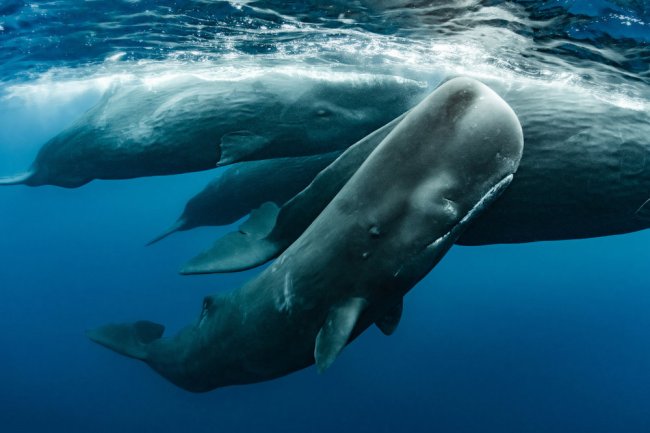There are nature documentaries that show you things you’ve never seen before. Then there’s “The Americas,” which shows its viewers something literally no human had ever seen before.
Marine scientists had long speculated that sperm whales dive all the way to the ocean floor to hunt for food. But they had never actually observed the whales doing so. How could anyone? As the executive producer of “The Americas” and creative director of the BBC Studios Natural History Unit Mike Gunton said to IndieWire as part of our USG University virtual panel series, “Sperm whales kind of break all the rules of biology because it’s so challenging for any living creature to go from the surface of the sea all the way down there — the pressure change is huge. And then the camera had to do the same thing.”
The distance from the surface to the seafloor off the coast of Dominica in the Caribbean Sea is a half mile, which means that the camera, newly invented by the production team over two years leading up to the shoot, would have to sustain pressure 100 times that of the atmosphere.
Gunton was joined for the discussion by fellow “Americas” team members Giles Badger, who directed the sperm whale shoot, cinematographer Dan Beecham, and composers Anze Rozman and Kara Talve, all of whose efforts were directed toward not just telling a compelling documentary story but illuminating a scientific first that the entire production enabled.
Watch “The Americas” video above
“There are things that lots of people have seen but we’ve never been able to bring to an audience before,” Gunton said. “This is something that nobody has ever seen, and that’s kind of a holy grail of wildlife filmmaking.”
The segment director, Badger, spearheaded the efforts to design the camera rig. No human could survive in the water at the depths sperm whales can plunge, so the camera would have to be attached directly to a whale via suction cups, and affixed to its back from a long pole held over the bow of the production team’s boat. Then the whale itself would take the camera down to the ocean floor.
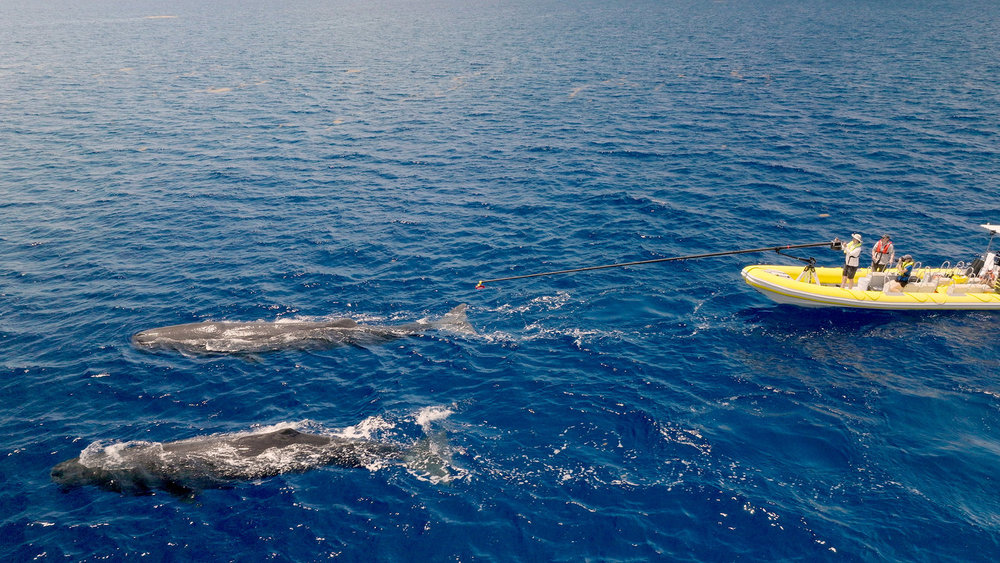
“Ultimately, the animals will write their own script,” Badger said. “You never know exactly what you’re going to get.” If the production team “missed” and didn’t affix the camera to the whale, it could be a full 40 minutes before the whale surfaced again and they’d have another opportunity.
That was only the start of the challenge, though. The production team has a rule of not interfering in the lives of the animals it documents as much as possible. That meant they had it hard-wired in the camera’s suction rigging that it would detach entirely from the whale after just five hours. A GPS tracker was attached to the camera, but the team would have to wait for it to wash ashore to retrieve it — hopefully before the battery on the geolocator had gone dead.
“You can go to all these lengths, you can spend two years building this camera, you can get it on a whale, you can record the footage, and then you lose the camera,” Badger said. “So as that particular camera was out, we knew the battery was getting weaker and weaker, we knew that we only had a finite number of hours before we’d lost it forever. We managed to find it in the seaweed after five or six hours, and even at that point when the camera’s been down and it’s come up and you found it, you still don’t know whether those tiny little cameras have got the images on them.”
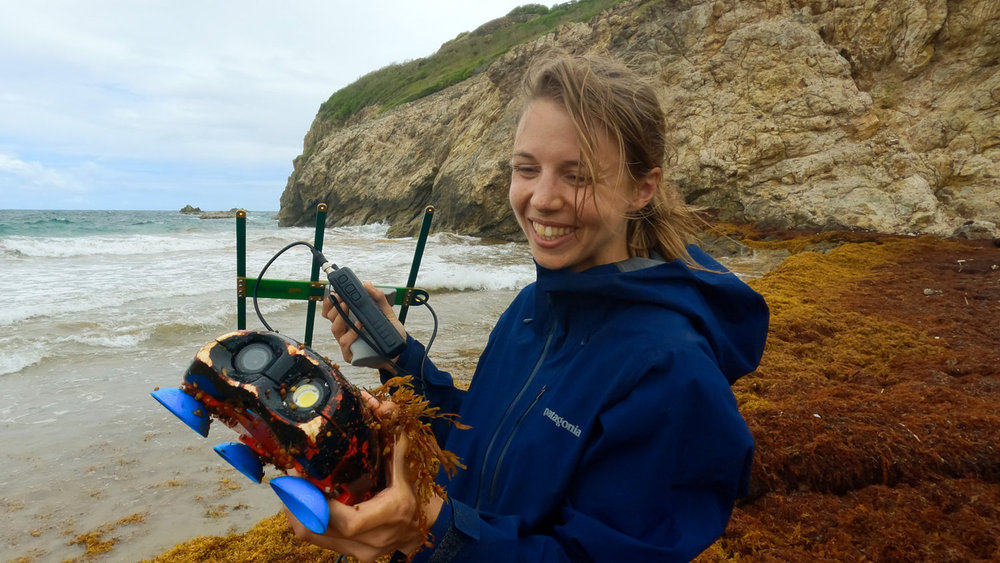
Just in case, Badger showed that a telephone number was imprinted on the camera with the promise of a reward for whoever should find it.
By any standard, though, this is television production as playing the long game. For the cinematographer, Beecham, who was in a wetsuit and wearing a rebreather to capture footage of the whales closer to the surface of the water before their dive, it’s almost as challenging.
“We went at a time of year where the ocean is supposed to be very, very calm, but I think the first 10 days or so of the shoot was very, very rough,” Beecham said. “In this job, you get used to people always saying to you, ‘Oh, you should have been here last week. The animals were amazing. The weather was amazing.’ I’ve talked about getting T-shirts printed up with that one actually because that happens so much. And then you need the animals to actually be there when the weather gets good as well. And then you need the dive gear to work, you need the camera to work, you need the boat skipper to get the boat just in the right place so the whales don’t get disturbed. And then I also need to not screw up when I go in and do my job as well. They’re sort of these narrow windows of opportunity that we grab.”
There’s a particular psychology involved in swimming near whales that a cinematographer needs to keep in mind as well.
“The approach with whales is not how to get close to them, but it’s how to position ourselves so they get close to us,” Beecham said. “So we never approach a whale, we allow them to come to us. And very often they don’t. Very often they’ll dive, so then I’m swimming back to the boat, dejectedly saying, ‘No shot. The whale dove. The whale turned off to the left or to the right.’ But every now and again, it’ll choose to come straight for you.”
All of this may help to give a better sense of why “The Americas,” as a 10-episode series, took five years to shoot and edit, even with multiple production teams spread out across the hemisphere. The sperm whale segment is just one out of dozens and dozens across that 10-hour runtime.
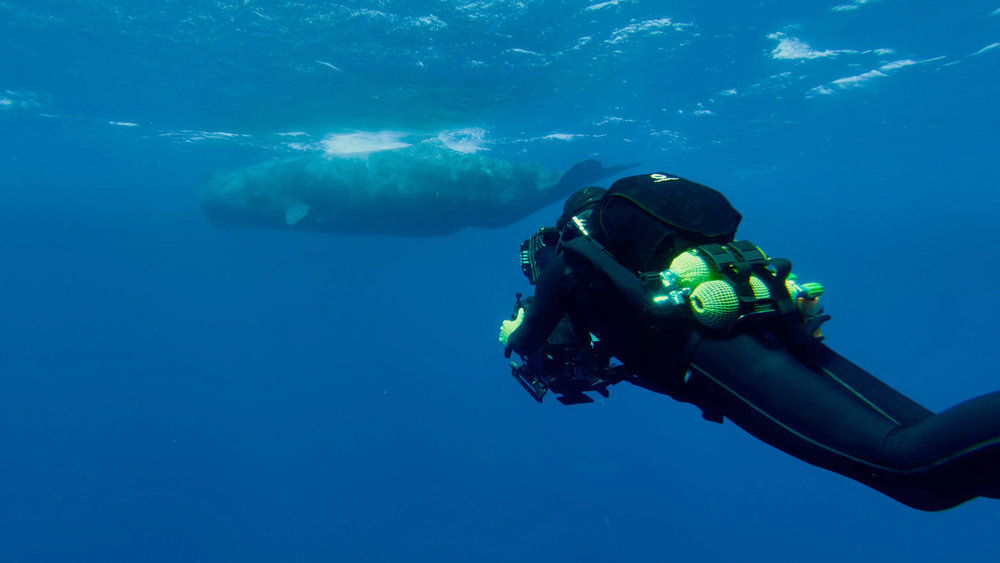
The scientific discovery involved is impressive in its own terms, but this is also a TV show, and one of the key ways to convey the import of a segment such as this is through the music. Hans Zimmer composed the series’ main theme, but Anže Rozman and Kara Talve composed the episodic music for moments such as the sperm whale’s dive to the ocean floor. It’s about finding an artistic expression for the wonder of what’s being shown.
“With a project like ‘The Americas,’ where you have so many people that care and love what they do, and who want to share that with the world, you hope that the end product of so much care and love will be sharing that care and love with the audience and them caring about the environment and caring about these amazing creatures that inhabit our land,” Rozman said. As such, “We work [on the music] in various stages of episode cuts, and we usually like to get cuts early so we can start getting immersed into the stories and the footage.”
“A lot of our job is making sure the instrumentation is portraying how big this animal feels,” Talve said. “To convey how close up we are to them. ‘Is this music narrating their relationship to their mother, perhaps?’ But because of the cinematography, because of just how beautiful everything was, it’s immediate inspiration.”
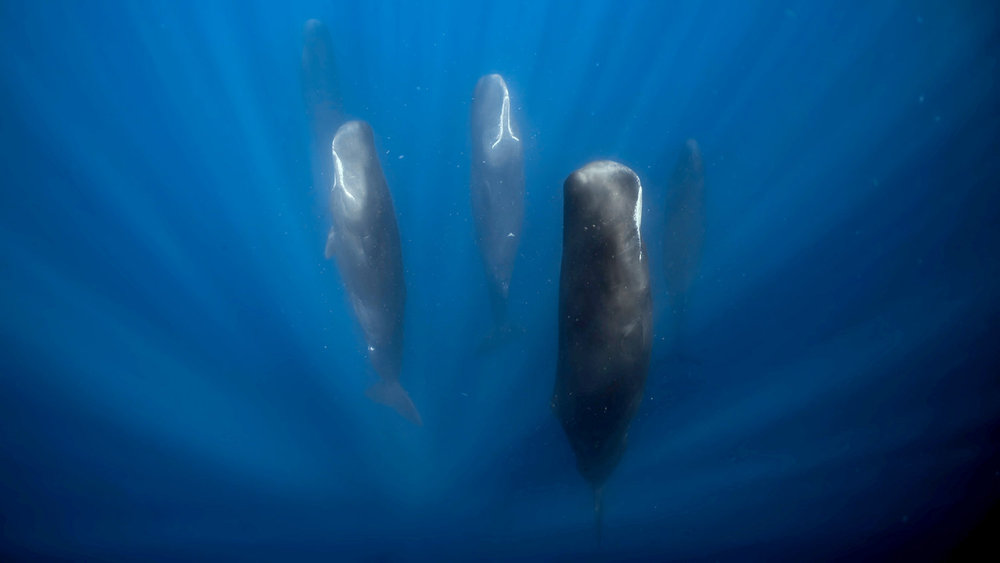
The whale is diving to the ocean floor to hunt for food, which means she can then make milk for her calf. Rozman and Talve give some woodwinds at the beginning of the segment, to suggest the childlike quality of the calf, then there’s some strings, and all of a sudden a little more urgency to the score, with a choir added, to convey the grandeur and mystery of when the mom makes her great dive.
This is a wondrous discovery, and it’s translated into the music. Another way the import comes across? Through the inquisitive narration provided by Tom Hanks. His own sense of curiosity and wonder that comes across through his voiceover is not just acting.
“When showing him the footage, he’d turn to the projectionist and say, ‘Have you seen this, guys?’” Gunton said of Hanks’s reaction to what he was watching. “This sense of, ‘I don’t believe what I’m seeing. I want you to show more!’ And I thought, ‘That is perfect. That is exactly what we want. This enthusiastic explorer who knows quite a lot, but doesn’t know everything and wants you to join him on that journey.’”
That’s an invitation that’s easily accepted.
IndieWire partnered with Universal Studio Group for USG University, a series of virtual panels celebrating the best in television art from the 2024-2025 TV season across NBC Universal’s portfolio of shows. USG University (a Universal Studio Group program) is presented in partnership with Roybal Film & TV Magnet and IndieWire’s Future of Filmmaking. Catch up on the latest USG University videos here.
